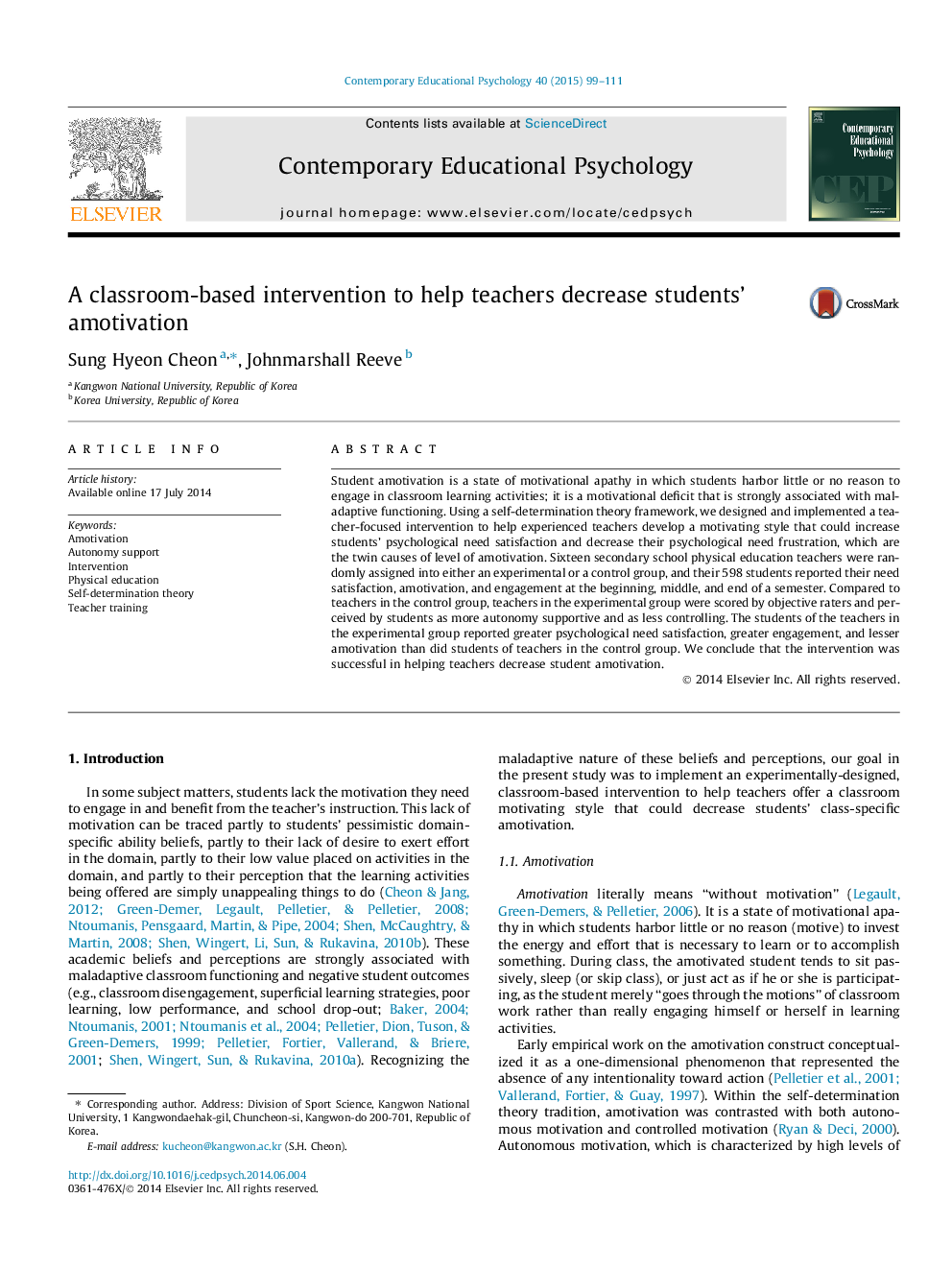| Article ID | Journal | Published Year | Pages | File Type |
|---|---|---|---|---|
| 352584 | Contemporary Educational Psychology | 2015 | 13 Pages |
•We implemented an experimental, longitudinal, teacher-focused intervention.•The intervention worked; teachers became more autonomy supportive.•Students of trained teachers showed increased need satisfaction and engagement.•Students of trained teachers showed decreased amotivation.•Overall, teachers learned how to decrease students’ class-specific amotivation.
Student amotivation is a state of motivational apathy in which students harbor little or no reason to engage in classroom learning activities; it is a motivational deficit that is strongly associated with maladaptive functioning. Using a self-determination theory framework, we designed and implemented a teacher-focused intervention to help experienced teachers develop a motivating style that could increase students’ psychological need satisfaction and decrease their psychological need frustration, which are the twin causes of level of amotivation. Sixteen secondary school physical education teachers were randomly assigned into either an experimental or a control group, and their 598 students reported their need satisfaction, amotivation, and engagement at the beginning, middle, and end of a semester. Compared to teachers in the control group, teachers in the experimental group were scored by objective raters and perceived by students as more autonomy supportive and as less controlling. The students of the teachers in the experimental group reported greater psychological need satisfaction, greater engagement, and lesser amotivation than did students of teachers in the control group. We conclude that the intervention was successful in helping teachers decrease student amotivation.
